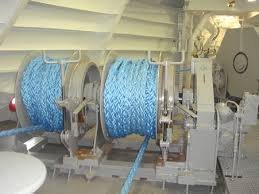You may remember a video we showed you last year of a high-risk docking maneuver, called Mediterranean mooring, performed by a Ro/Ro passenger ferry at the Greek island of Kimolos in March 2013.
The video was amazing to watch and not just because it looked extremely dangerous, but also because of the awe-inspiring ship handling skills of the captain and crew. In fact, the captain, Captain Isidoros Lignos, has since gained quite the reputation for his ability to perform the Med mooring maneuver to disembark passengers and supplies in heavy seas.
With that in mind, here’s another video of the same ship, the Adamantios Korais, again under the command of Captain Lignos, performing a similar maneuver under similar conditions at the Aegean Sea port of Sikinos Island, Greece this past Saturday.
Now before you call this crazy, just remember that without the supplies and people brought by these ferries, many of the small Aegean Sea islands would literally be cut off from the rest of the world, and the Greeks aren’t going to a little heavy weather let that happen.
gCaptain Maritime & Offshore News | WATCH: (Another) Heavy Seas Med Moor in Greece
The video was amazing to watch and not just because it looked extremely dangerous, but also because of the awe-inspiring ship handling skills of the captain and crew. In fact, the captain, Captain Isidoros Lignos, has since gained quite the reputation for his ability to perform the Med mooring maneuver to disembark passengers and supplies in heavy seas.
With that in mind, here’s another video of the same ship, the Adamantios Korais, again under the command of Captain Lignos, performing a similar maneuver under similar conditions at the Aegean Sea port of Sikinos Island, Greece this past Saturday.
Now before you call this crazy, just remember that without the supplies and people brought by these ferries, many of the small Aegean Sea islands would literally be cut off from the rest of the world, and the Greeks aren’t going to a little heavy weather let that happen.
gCaptain Maritime & Offshore News | WATCH: (Another) Heavy Seas Med Moor in Greece

